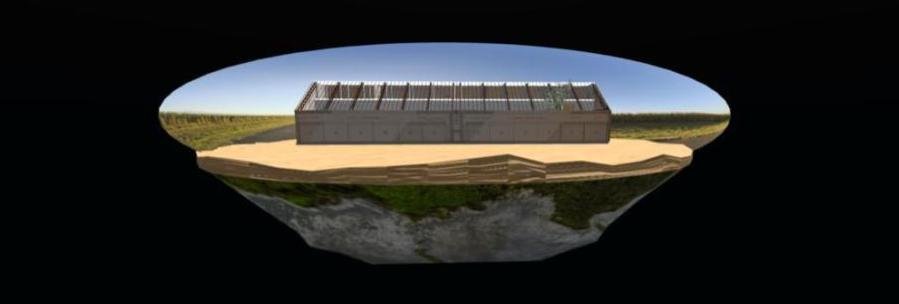For the 15th Conference on Creativity and Cognition Catalina Alvarez and I presented the Ant Farm Antioch Art Building in VR (aka AFAAB in VR) a project we’d developed with Antioch College students on Mozilla Hubs as part of a residency with Museu Sem Parades. I also wrote this paper for the conference’s Proceedings.
Does an innovative building design make certain kinds of creativity and collaborations possible that could not be realized in a traditional structure? Are the ways that humans have used a building in the past — their accomplishments, experiences, and artworks — an inherent part of that building’s legacy? How can we use virtual reality to preserve a structure (and its spirit, or its archival legacy) that is otherwise abandoned and off-limits?
In 1971, the radical media art and architecture group Ant Farm designed a visual arts studio building on the campus of Antioch College, in Ohio. Since 2008 the building has been closed, and is slowly falling into disrepair. In 2021, a collective of filmmakers, architects, curators and students came together to create a virtual version of the building, using the original architectural drawings. The Mozilla Hubs space, which we call AFAAB (Ant Farm Antioch Art Building) in VR is simultaneously a virtual gathering space, an archival exhibition space, and a workshop for re-envisioning the building itself. We envision this space as a location for collapsing the real and the virtual, the past and the present. Students can see how the building was constructed and peer through layers of time via an archive of different eras of creative activity in the space.
Authors: Liz Flyntz and Catalina Alvarez.
C&C '23: Proceedings of the 15th Conference on Creativity and Cognition
June 2023, Pages 246–249
The full paper is available through the ACM Digital Library or as a PDF here.
See more about the AFAAB project and AFAAB in VR here.
